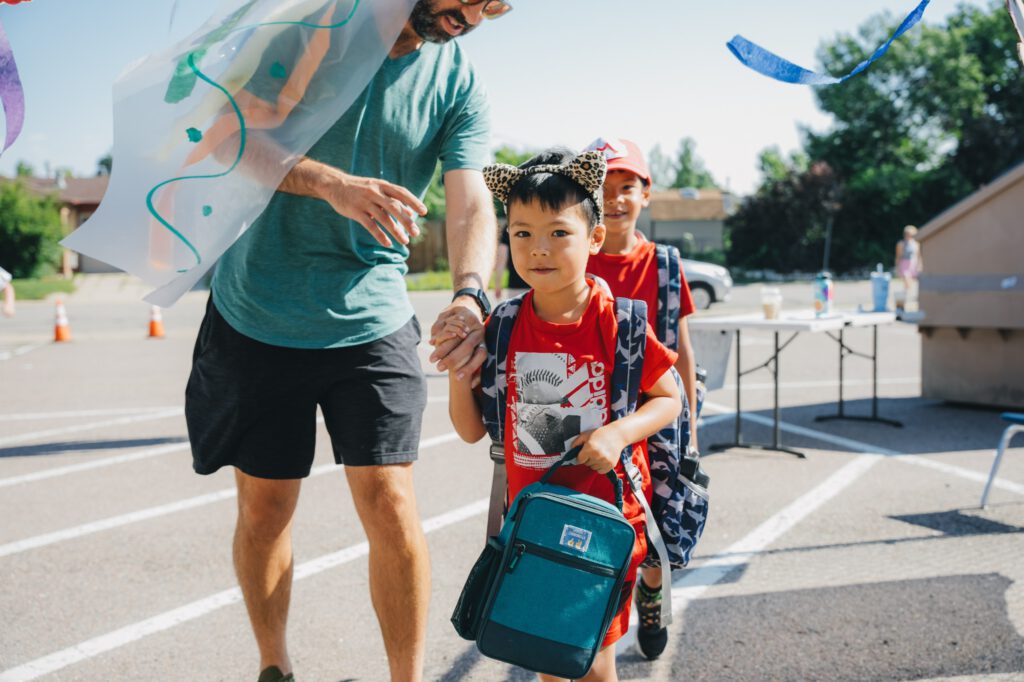“I’ve missed over 9,000 shots in my career. I’ve lost almost 300 games. 26 times I’ve been trusted to take the game-winning shot and missed. I’ve failed over and over and over again in my life. And that is why I succeed.” —Michael Jordan
Fail, failed, failure. The words themselves conjure up powerful emotions, and not ones we might necessarily wish for our kids. And yet, more and more voices are joining the cry: our kids need to learn to fail.
Though it seems counterintuitive, learning to fail fast and fail often is something very successful people credit for their very success. So how can we put failure in the proper perspective and help our kids learn to use it as a stepping stone? The answer is by developing a growth mindset.
The Evolution of Growth Mindset
Our understanding of intelligence and human potential has evolved over time. Here are a few things to consider:
An antiquated view of intellectual ability separated the haves from the have-nots: either you were born with ability and talent in an area, or you were not. You were smart, creative, inventive… Or you were not. This is called a fixed mindset.
This fixed mindset resulted in schoolkids being tracked by perceived ability or potential, bucketed at an early age as college-bound, vocational, or remedial. While still employed in many schools and districts, the controversial practice has long been challenged on the basis of fairness, equity and discrimination. Personalized learning and flexible grouping with tiered interventions and frequent progress monitoring are gradually replacing ability tracking. Achievement is replacing perceived ability as the criteria for advancement.
In 1983, Harvard professor Howard Gardner expanded our understanding of human intelligence when he proposed that intelligence was not a single, narrowly-defined numerical IQ score, but rather a wide range of capabilities. Gardner’s Theory of Multiple Intelligences asserts that each individual has a unique range of intellectual capacities, more complex than just the linguistic and logical-mathematical abilities measured by traditional tests. In addition to linguistic and logical-mathematical, his profile includes musical, spatial, interpersonal, intrapersonal, bodily-kinesthetic and naturalistic intelligences. He also posited that human beings can enhance and grow their diverse intellectual capacities through focused educational experiences.
Through extensive brain research, we know that due to its neuroplasticity, the human brain can adapt and grow, even overcoming injury and trauma. With practice and repetition, we can create strong neural connections that enable us to do incredible things. So, the power to learn and grow is in our hands and in our heads, quite literally.
Nothing Ventured, Nothing Gained
Stanford professor and psychologist Carol Dweck has written extensively about the growth mindset. Antithetical to the fixed mindset, it’s the idea that we can grow and develop our capabilities as the result of hard work and challenging educational opportunities. She warns parents and educators that conveying a fixed mindset to kids severely limits their effort and motivation. If they fail to recognize their capacity to learn and grow through hard work, kids are less inclined to put forth the effort. She reminds us that, “Most successful people had failures along the way,” and if we do not try, we automatically fail.
Thomas Edison, a prolific inventor with nearly 1,100 patents to his name, has been quoted as stating, “I have not failed. I have just found 10,000 ways that won’t work.” That kind of persistence is rare, but we can impart a small bit of his resolve by encouraging kids to take risks and helping them view mistakes and failures, not as endpoints, but as stepping stones.
Like Edison, many of the world’s most successful innovators have failed forward, using failed attempts to propel them to success. Steve Jobs has been called “the poster child for transitioning from failure to success.” He dropped out of college and got fired from his own company before returning to make Apple the world’s largest tech company.
Learning to Fail Forward and Fail Fast
Though as parents we want the best for our kids, we must teach them not only to succeed but also how to fail. Playing it safe will only get them so far, as true and enduring success requires us to take risks, to put ourselves out there, to accept mistakes without fear and to carefully reflect in order to better understand how to change.
By modeling a growth mindset, we can help kids understand that failures are an essential part of the process; they advance our success if we learn from them. Draw on success stories like Michael Jordan, Thomas Edison and Steve Jobs. Their successes would have been impossible without their failures along the way.
—
Ready to get started? Check out the creativity-sparking, grit-building projects and classes at Camp Galileo Anywhere.





